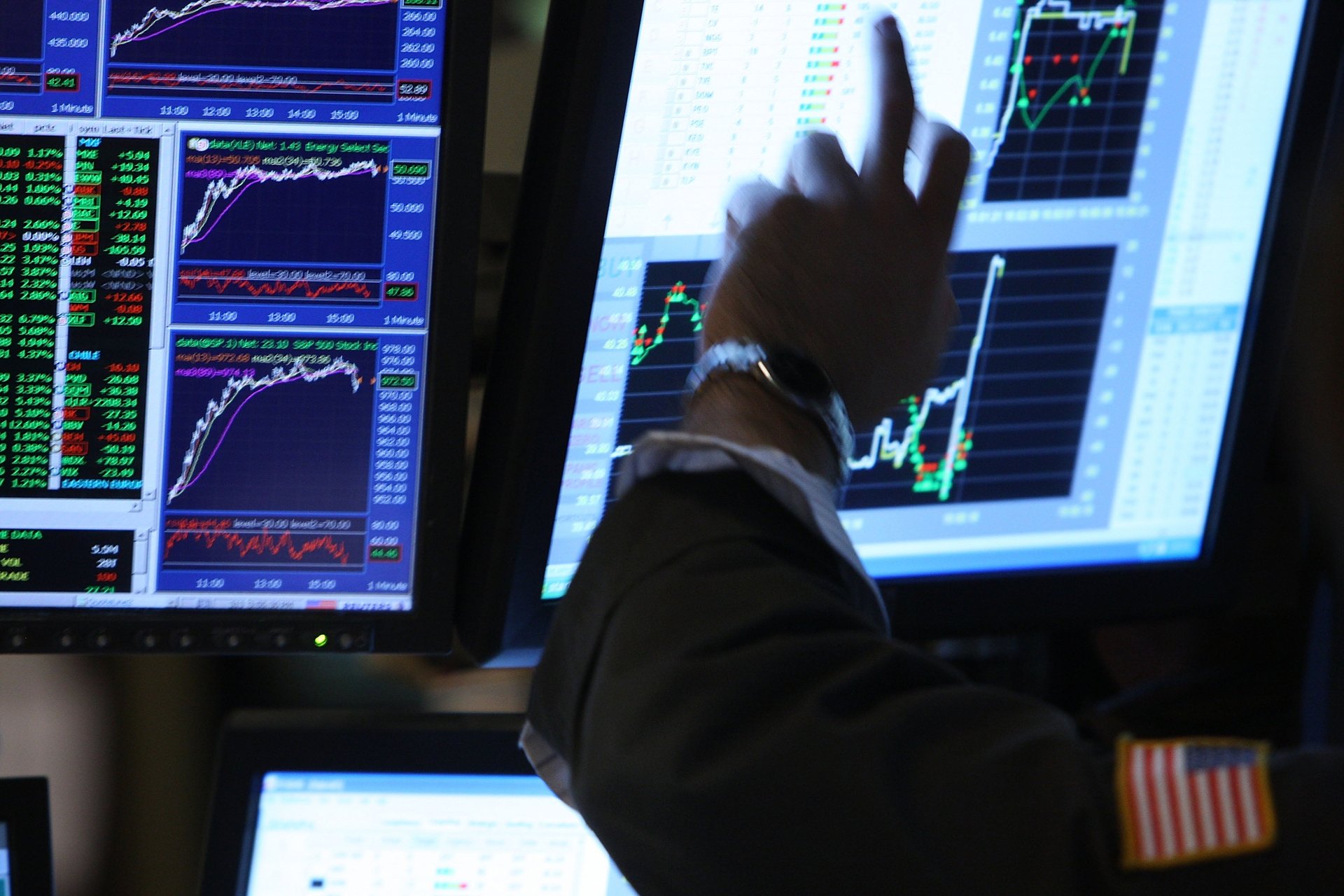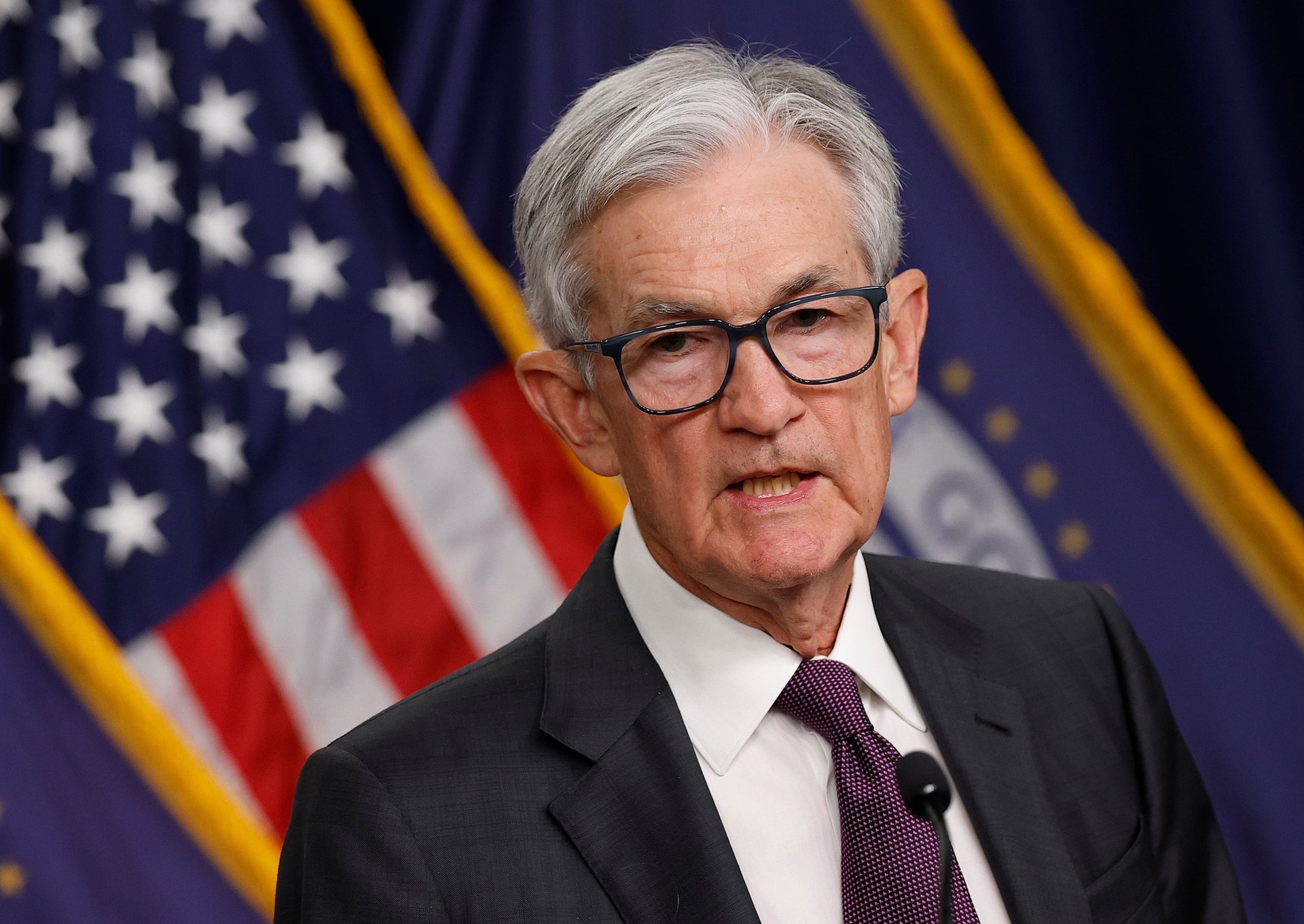Job cuts, inflation, and lowered GDP forecast is a recipe for stagflation, asset manager says
Kevin Mahn, president and CIO of Hennion & Walsh Asset Management, tells NYSE TV why investors are shifting to value stocks, utilities, and bonds in 2025

Kevin Mahn, president and CIO of Hennion & Walsh Asset Management, spoke with NYSE (ICE) TV for a special video interview.
Watch the interview above and check out the transcript below, which has been lightly edited for length and clarity.
KRISTEN SCHOLER: Joining me now in the studio is Kevin Mahn, president and chief investment officer at Hennion and Walsh Asset Management. Kevin, always good to have you, and especially here as we start this second quarter together.
KEVIN MAHN: Yes, happy April Fool’s Day.
KS: Happy April Fool’s Day as well. I know you always come with the facts. So give us the facts here as we start the second quarter. Kevin, where do we stand in the markets?
KM: Yeah. I think a lot of investors will be happy to see that March is now behind us and the first quarter is now behind us, as the stock market experienced its worst March and its worst first quarter since 2022. However, I think there are four things that could happen, Kristen, in the second quarter that could help allow for a strong second half of the year.
First and foremost, tariffs. We’re going to have more certainty, at least around what the tariffs will be so that we can plan and adjust our portfolios accordingly. Perhaps the reciprocal tariffs won’t be as reciprocal as we earlier thought that would be a tailwind for the markets. If the Federal Reserve does cut interest rates for the first time during the second quarter by 25 basis points, that would be a tailwind for the markets. If the tax cuts get extended during the second quarter, that would be a tailwind for the markets.
And of course, the more and more announcements we hear about increases in defense spending and increases in AI infrastructure spending are tailwinds for the markets as well. So I know this volatility is hard to deal with, but try not to time the market. Stay invested true to your risk tolerance. Adjust your portfolios accordingly and be rest assured that the markets will come back. And when they do, they tend to bounce back just as strongly as they move downward.
KS: So in this environment, Kevin, certainly it sounds like a buy and hold perhaps is what you’re recommending to your clients. But for viewers who are watching and looking at the volatility that we’ve seen, at least to start the year, is there any sort of reallocating that you might suggest amid some of the sector rotation?
KM: Sure. I would say hold and adjust, because numerous studies show that timing in the market is an exercise in futility. But if you could look into those areas of the market that are benefiting right now, value is significantly outperforming growth. International is outperforming U.S. Defense stocks, industrials, utilities. How about utility stocks? They pay a good dividend. They hold up well in the face of volatility, and they are a backdoor play into the AI revolution. That’s a sector you might wanna look at. And of course, bonds. Bonds can provide you with that principle protection when you hold them to maturity and a good steady stream of income. And they’re also pretty, volatility-wise, strong as well.
KS: I do want to talk about the Fed and the path forward for interest rates because we had heard from Fed chair Jerome Powell toward the end of the first quarter that yes, he sees more uncertainty and, you alluded to it, the market does not like uncertainty. It wants clarity. But the Fed did hold pat on his interest rate stance, seeing two cuts this year. In the past week, several guests have come on the show and they actually think rates might rise this year due to inflation. Give us a better sense as to what makes up your particular outlook on rates.
KM: The only thing that’s certain right now is that there is more uncertainty ahead, but Chairman Powell did reiterate that he stands ready to step in if the economy deteriorates further or the job market worsens. They still have two rate cuts forecast for this year. However, they also increased their outlook for inflation, they increased their outlook for unemployment, and they lowered their forecast for GDP. Put that all together, that’s a recipe for potential stagflation. But I do think the Fed continues to cut rates this year on a more gradual pace because they’re more concerned about an economic slowdown potentially becoming a recession than they are with inflation staying above their target 2%.

KS: We had heard the Fed share use that word “transitory” again.
KM: Again, it’s back! It’s back! Maybe these inflationary pressures related to tariffs are indeed transitory, but we’ll learn more about these tariffs tomorrow.
KS: Now, of course, the jobs report is due out on Friday. We’ve seen a wave of layoffs, at least just focusing on the federal government with DOGE, tens of thousands of them, if not more, at this point. What does that mean for the jobs report?
KM: Well, the Fed updated their forecast for unemployment this year to end the year at about 4.4%, and they think it will come down slightly next year to about 4.3%. Now, from a historical standpoint, that’s not very high, but from where we are right now, that means hundreds of thousands of other Americans are gonna be out of work. That’s a concern because Americans who are out of work don’t tend to spend as much as Americans who do work, and 70% of our economic growth comes from consumer spending, so it’s something to pay a close attention to.
KS: Next week, earnings season will start to kick off. Delta (DAL) among the first companies to report should give us a good sense as to the health of the consumer when it comes to discretionary travel spend. Any expectations there?
KM: As it stands right now, if you look at FactSet (FDS), they’re forecasting 7%-plus year-over-year earnings growth. That would mark the seventh consecutive quarter of year-over-year earnings growth. I think that will come down a little bit, but if we can continue to have companies grow their earnings amidst this stock market pullback, that creates some pretty attractive entry points. The Mag Seven itself is currently trading at 25 times current earnings. That’s the lowest it’s been since the end of 2022. There are investment opportunities out there to consider as a result of the pullback we’ve seen.
KS: I also want ask about international stocks because we knew, or at least it was broadcast, when President Donald Trump took office for a second term: American exceptionalism. In some ways, that’s sort of replaced MAGA, obviously. He’s always, you know, catered to the MAGA base. It helps him get elected. But American exceptionalism, as we see international stocks outperform. How should a viewer look at that? Should they remain true to American exceptionalism, if that’s the ideology that they’ve adopted? Or should they be open to international investments?
KM: I think what we’ve seen so far in 2025 is a reminder to investors about the potential benefits of diversifying your portfolio geographically. International developed markets have significantly outperformed the rest of the world. Even emerging markets have outperformed the U.S. to date, but we’re still overweight U.S. A lot of this transition period is creating this uncertainty, creating this volatility, but ultimately, I think the U.S. comes out stronger as a result. So that doesn’t necessarily mean you abandon U.S. stocks because international’s outperforming, but you should consider adding them to a geographically balanced portfolio.
KS: Bitcoin. We’re gonna end with a Bitcoin question, Kevin. What are your thoughts?
KM: Yeah, my thoughts are, I still don’t understand it. I don’t understand why it moves higher or lower on a given day. I understand the Trump administration is behind cryptocurrencies and behind Bitcoin. But I think there are better opportunities in the market on a risk-adjusted basis than Bitcoin. But I still like the underlying technology that it’s built on, that being blockchain.